Google Login auf Android
Einführung
Section titled “Einführung”In diesem Leitfaden lernen Sie, wie Sie Google Login mit Capgo Social Login für Android einrichten. Ich gehe davon aus, dass Sie die allgemeine Einrichtungsanleitung bereits gelesen haben.
Verwendung von Google Login auf Android
Section titled “Verwendung von Google Login auf Android”In diesem Teil lernen Sie, wie Sie Google Login in Android einrichten.
-
Erstellen Sie eine Android-Client-ID.
-
Klicken Sie auf die Suchleiste

-
Suchen Sie nach
credentialsund klicken Sie auf dieAPIs and ServicesOption (Nummer 2 auf dem Screenshot)
-
Klicken Sie auf
create credentials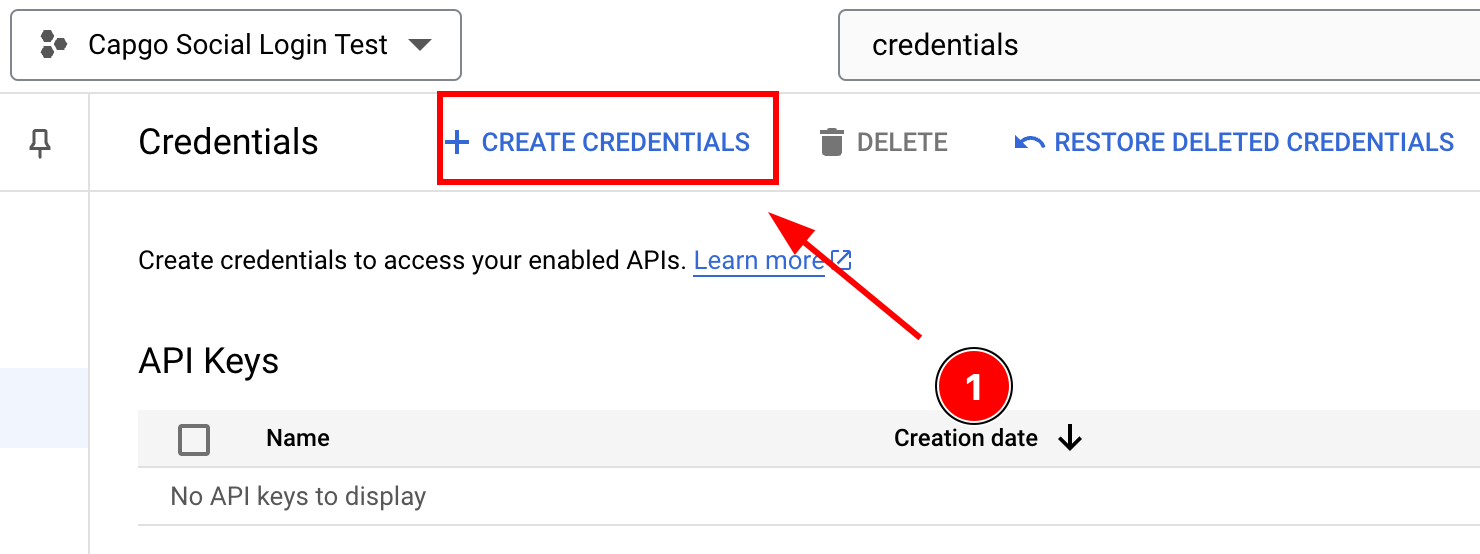
-
Wählen Sie
OAuth client ID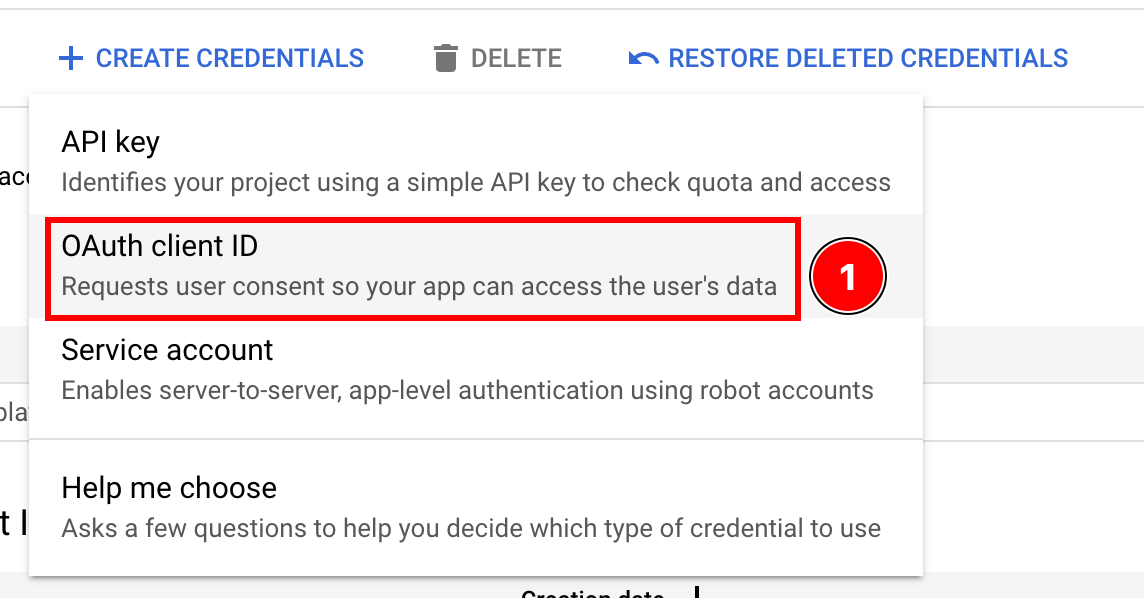
-
Wählen Sie den
AndroidAnwendungstyp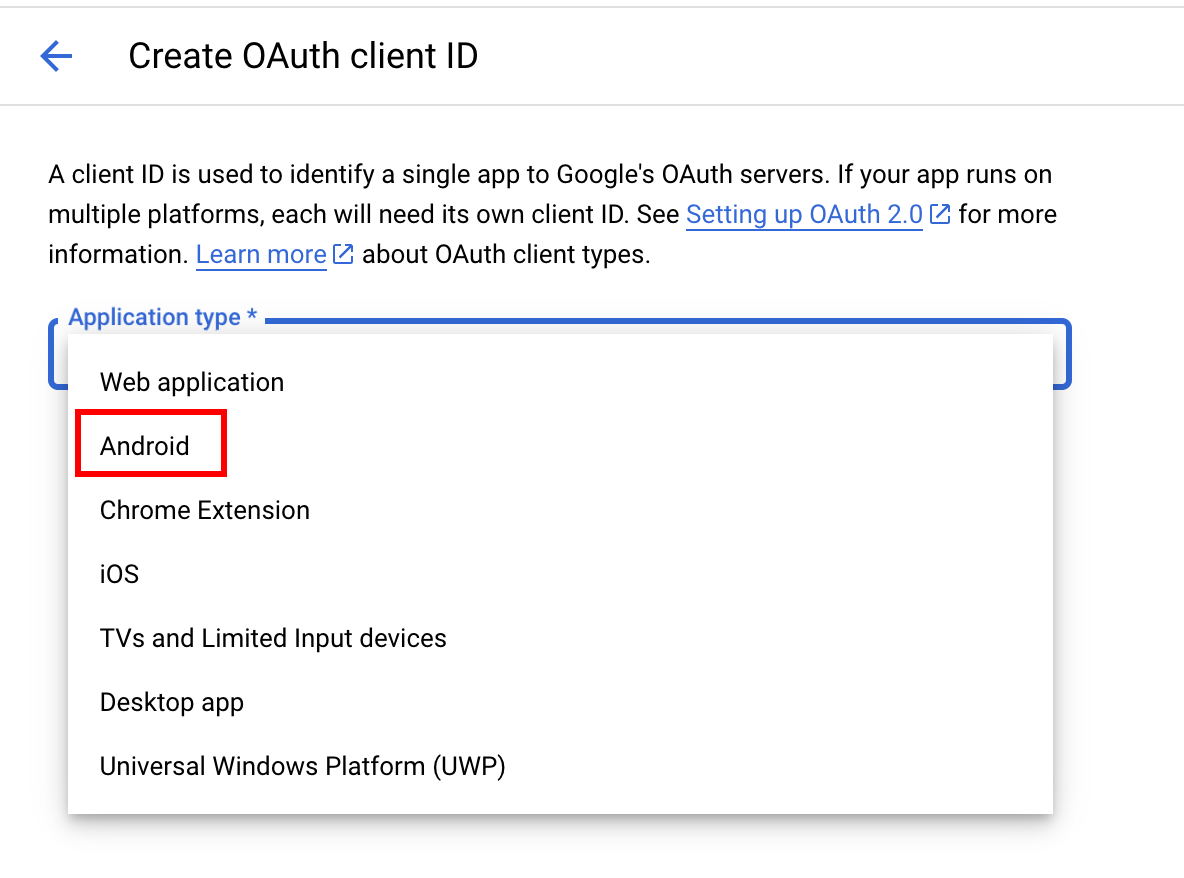
-
Öffnen Sie Android Studio
-
Ganz unten im Navigator finden Sie die
Gradle Scripts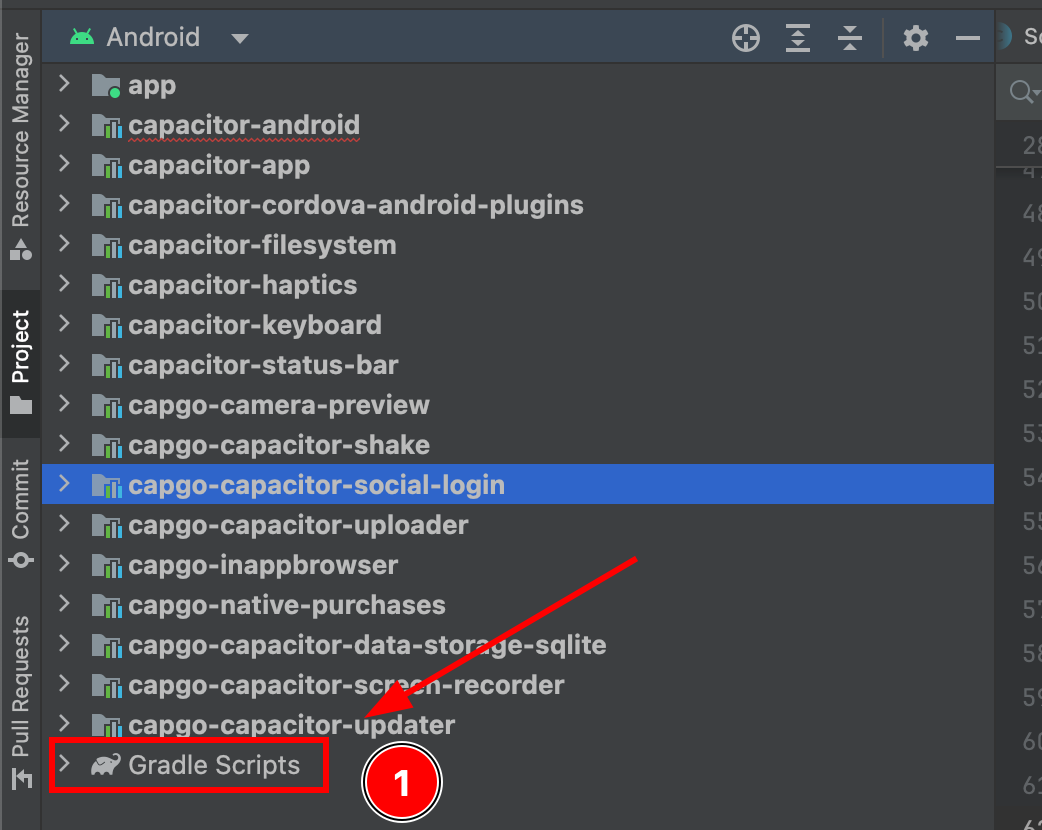
-
Finden Sie
build.gradlefür das Modulapp
-
Kopieren Sie die
android.defaultConfig.applicationId. Dies wird Ihrpackage namein der Google Console sein
-
Öffnen Sie nun das Terminal. Stellen Sie sicher, dass Sie sich im
androidOrdner Ihrer App befinden und führen Sie./gradlew signInReportaus

- Scrollen Sie zum Anfang dieses Befehls. Sie sollten Folgendes sehen. Kopieren Sie den
SHA1.

- Gehen Sie nun zurück zur Google Console. Geben Sie Ihre
applicationIdalsPackage Nameund Ihren SHA1 im Zertifikatsfeld ein und klicken Sie aufcreate
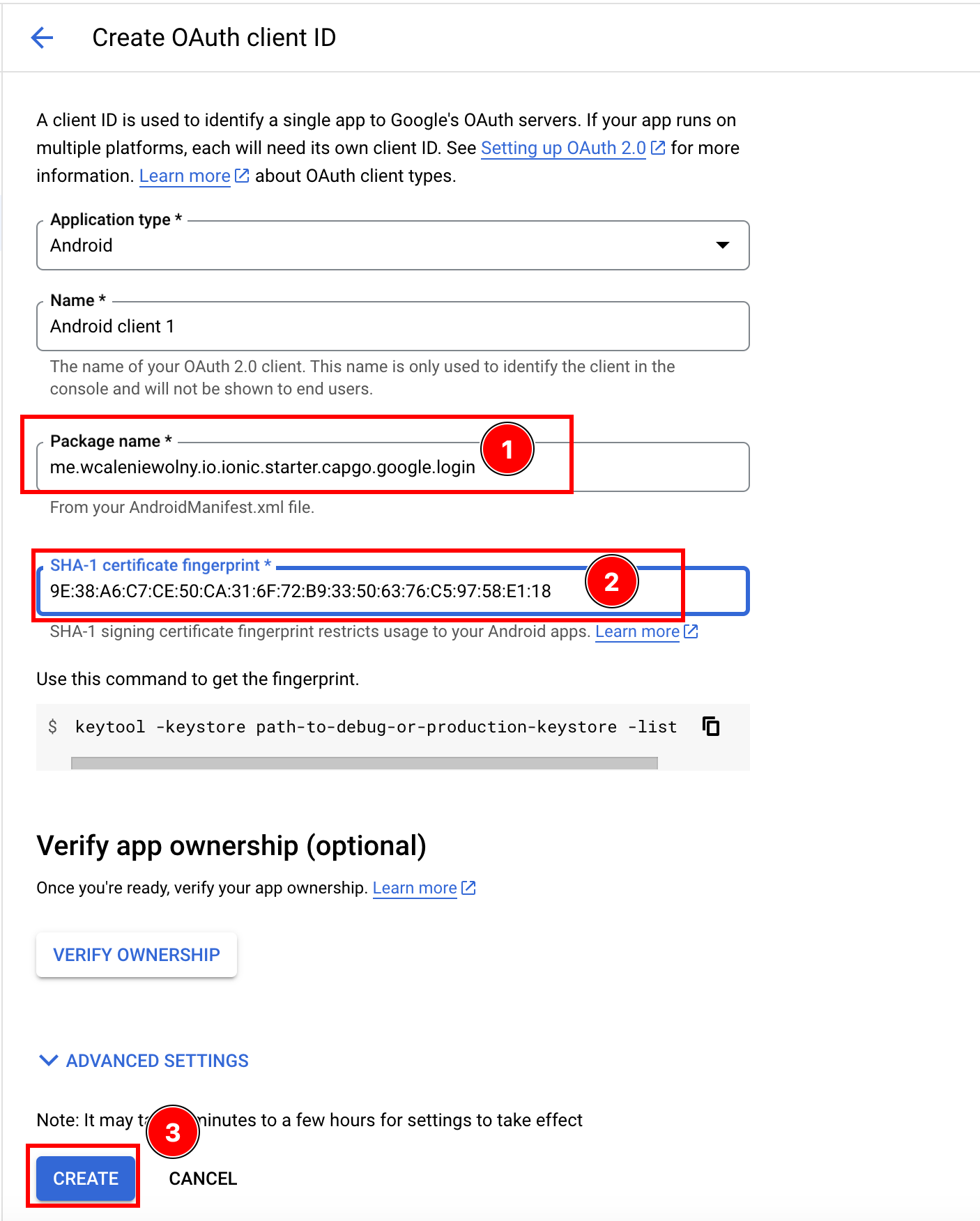
-
-
Erstellen Sie einen Web-Client (dies ist für Android erforderlich)
-
Gehen Sie zur
Create credentialsSeite in der Google Console -
Setzen Sie den Anwendungstyp auf
Web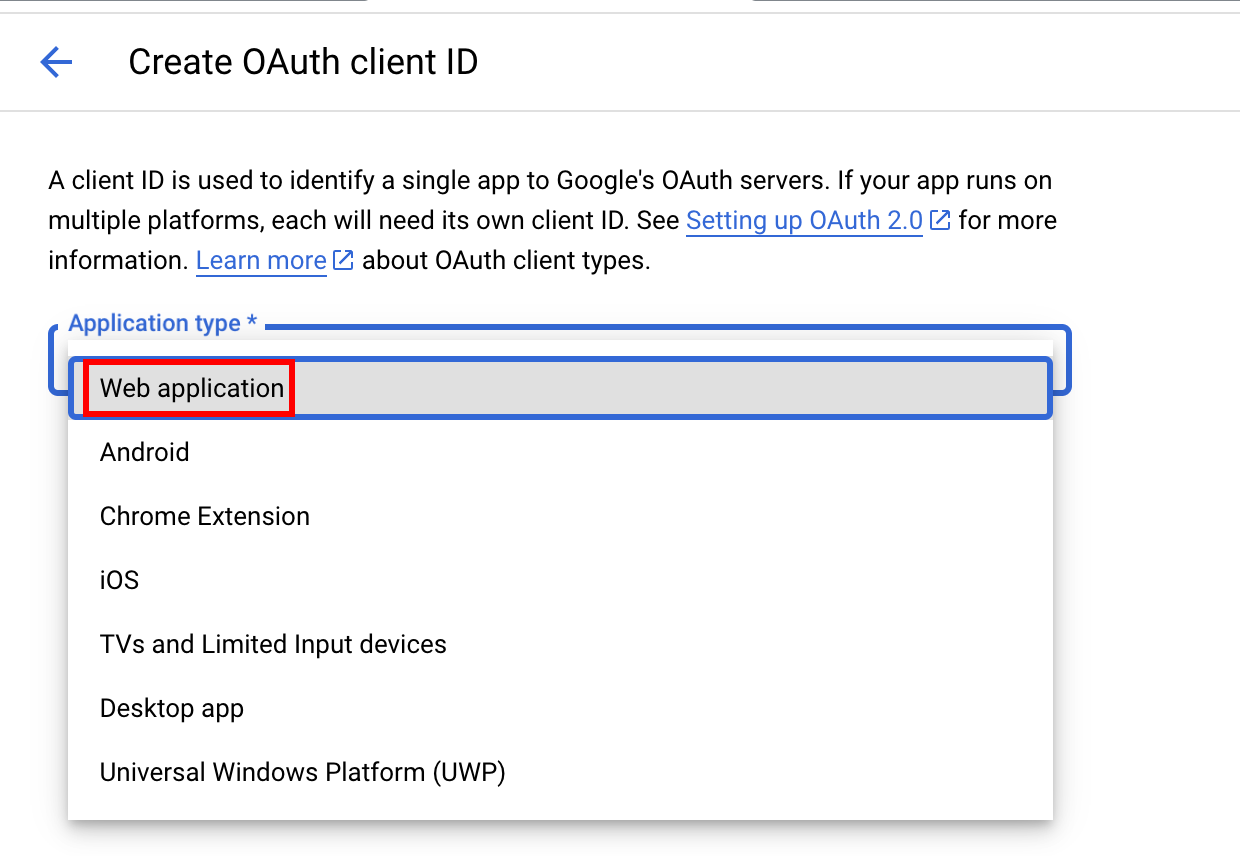
-
Klicken Sie auf
Create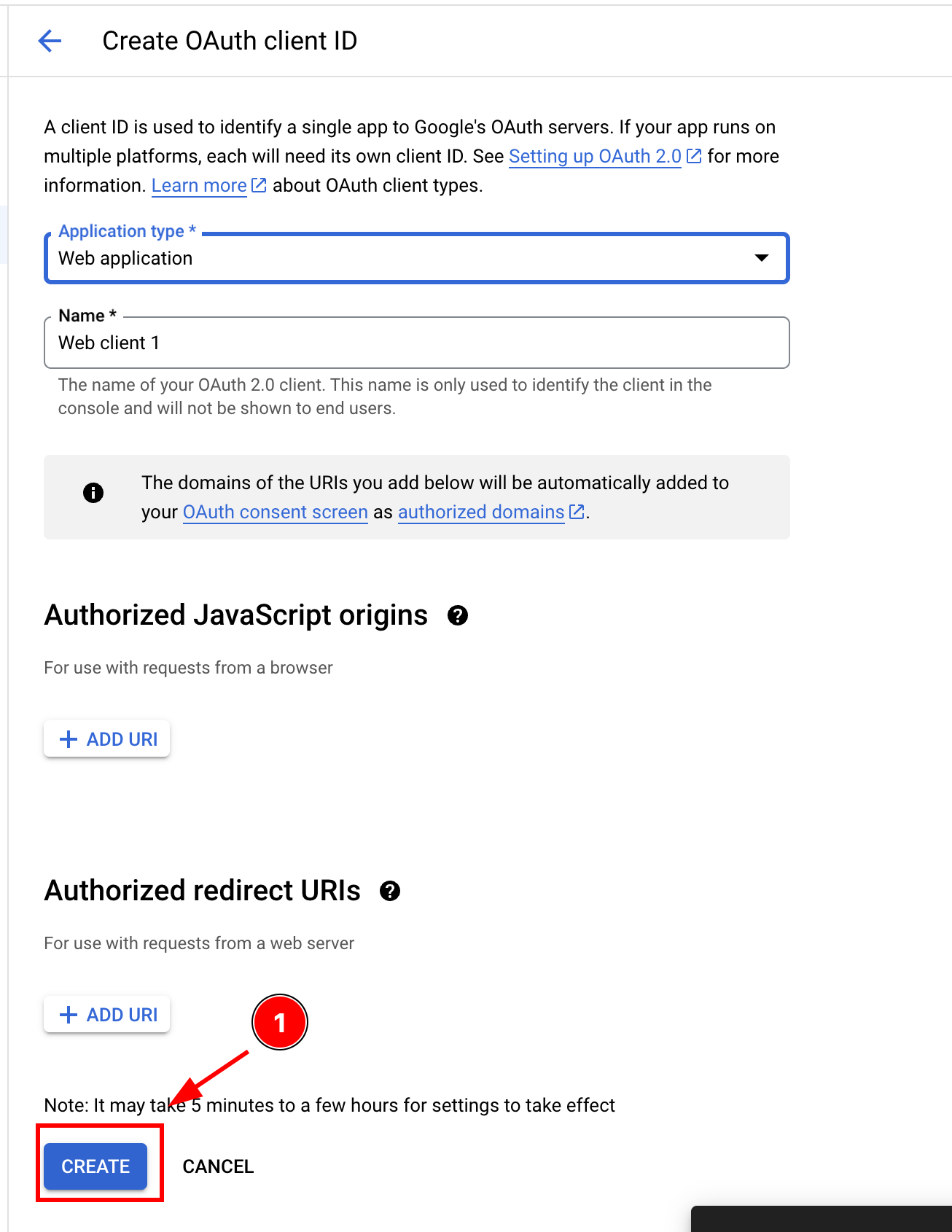
-
Kopieren Sie die Client-ID, Sie werden diese als
webClientIdin Ihrem JS/TS Code verwenden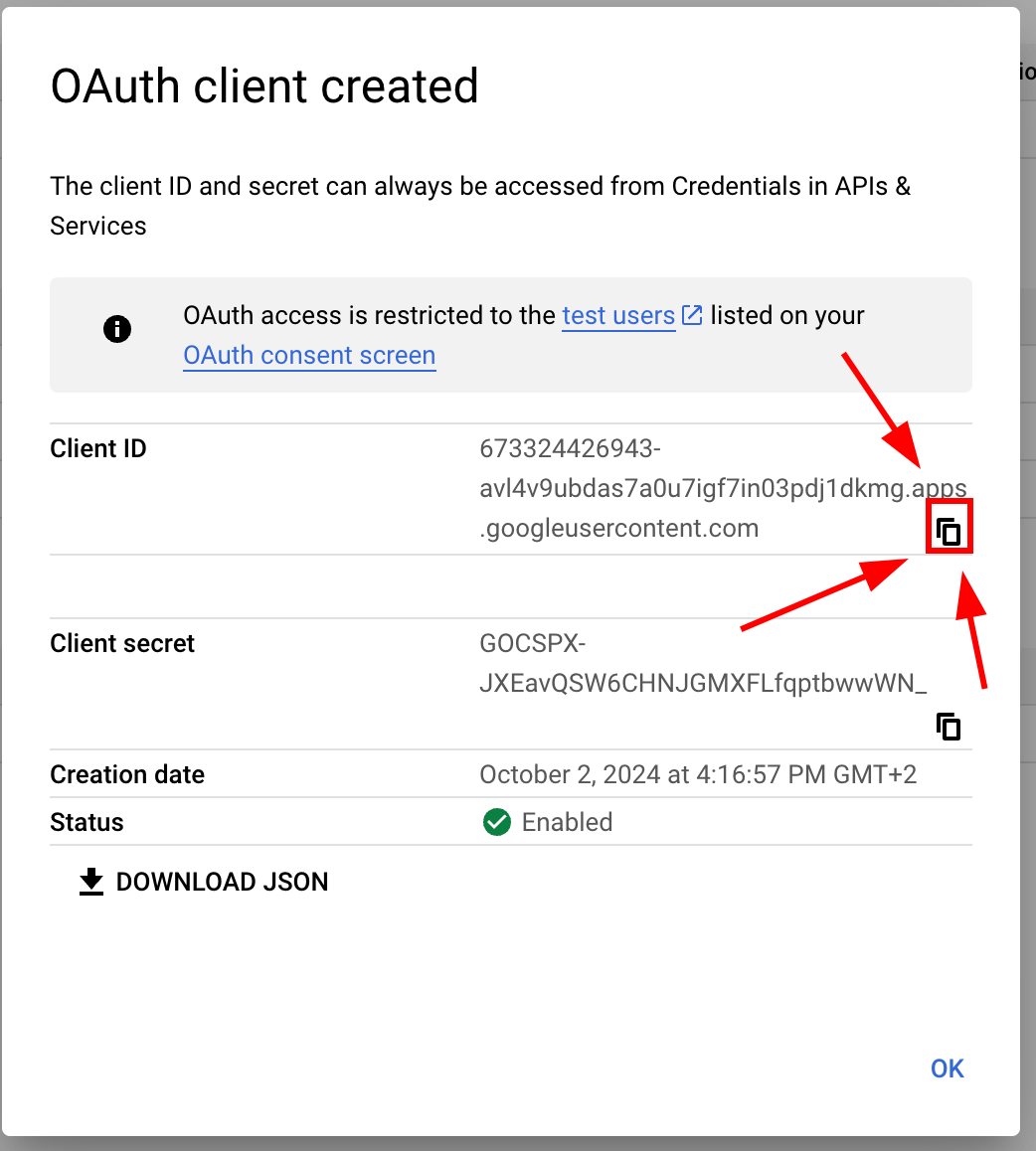
-
-
Ändern Sie Ihre
MainActivity-
Bitte öffnen Sie Ihre App in Android Studio. Sie können
cap open androidausführen -
Finden Sie
MainActivity.java-
Öffnen Sie den
appOrdner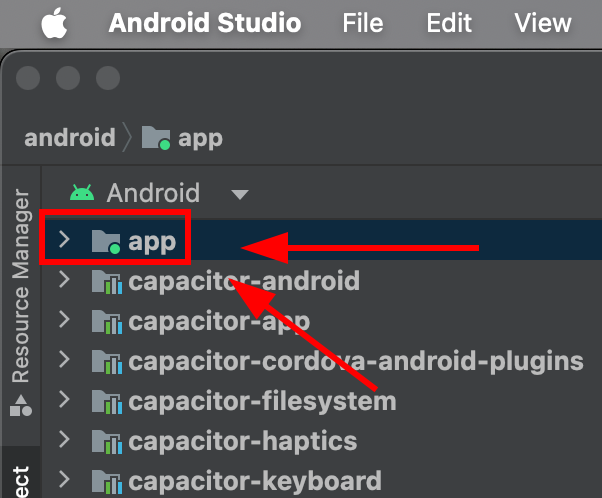
-
Finden Sie
java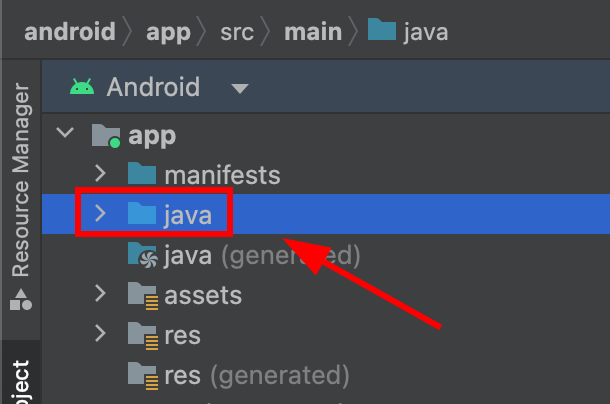
-
Finden Sie Ihre
MainActivity.javaund klicken Sie darauf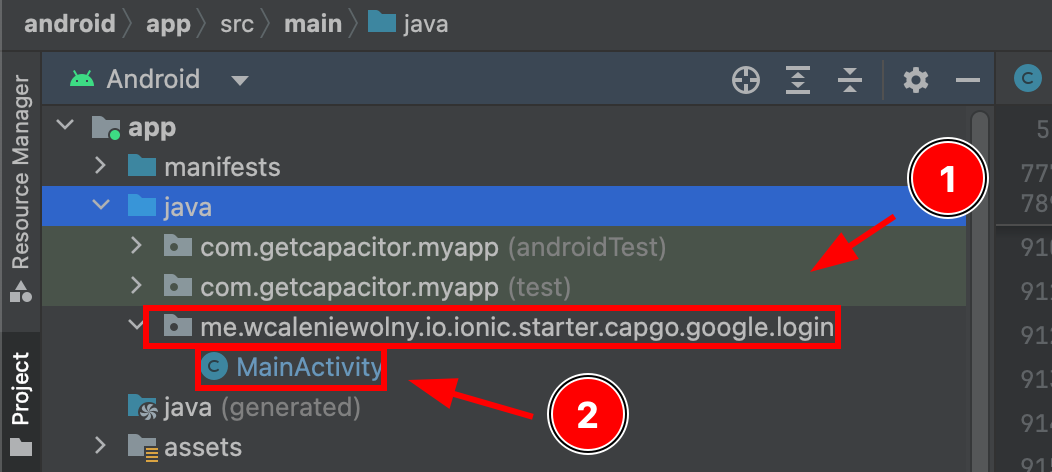
-
-
Ändern Sie
MainActivity.java. Bitte fügen Sie den folgenden Code hinzuimport ee.forgr.capacitor.social.login.GoogleProvider;import ee.forgr.capacitor.social.login.SocialLoginPlugin;import ee.forgr.capacitor.social.login.ModifiedMainActivityForSocialLoginPlugin;import com.getcapacitor.PluginHandle;import com.getcapacitor.Plugin;import android.content.Intent;import android.util.Log;import com.getcapacitor.BridgeActivity;// ModifiedMainActivityForSocialLoginPlugin ist SEHR SEHR wichtig !!!!!!public class MainActivity extends BridgeActivity implements ModifiedMainActivityForSocialLoginPlugin {@Overridepublic void onActivityResult(int requestCode, int resultCode, Intent data) {super.onActivityResult(requestCode, resultCode, data);if (requestCode >= GoogleProvider.REQUEST_AUTHORIZE_GOOGLE_MIN && requestCode < GoogleProvider.REQUEST_AUTHORIZE_GOOGLE_MAX) {PluginHandle pluginHandle = getBridge().getPlugin("SocialLogin");if (pluginHandle == null) {Log.i("Google Activity Result", "SocialLogin login handle is null");return;}Plugin plugin = pluginHandle.getInstance();if (!(plugin instanceof SocialLoginPlugin)) {Log.i("Google Activity Result", "SocialLogin plugin instance is not SocialLoginPlugin");return;}((SocialLoginPlugin) plugin).handleGoogleLoginIntent(requestCode, data);}}// This function will never be called, leave it empty@Overridepublic void IHaveModifiedTheMainActivityForTheUseWithSocialLoginPlugin() {}} -
Speichern Sie die Datei
-
-
Verwenden Sie Google Login in Ihrer Anwendung
-
Importieren Sie zuerst
SocialLoginimport { SocialLogin } from '@capgo/capacitor-social-login'; -
Rufen Sie initialize auf. Dies sollte nur einmal aufgerufen werden.
// onMounted ist Vue-spezifisch// webClientId ist die Client-ID, die Sie im Web-Client-Erstellungsschritt erhalten haben, nicht die Android-Client-ID.onMounted(() => {SocialLogin.initialize({google: {webClientId: '673324426943-avl4v9ubdas7a0u7igf7in03pdj1dkmg.apps.googleusercontent.com',}})}) -
Rufen Sie
SocialLogin.loginauf. Erstellen Sie eine Schaltfläche und führen Sie den folgenden Code beim Klicken aus.const res = await SocialLogin.login({provider: 'google',options: {}})// Verarbeiten Sie die Antwortconsole.log(JSON.stringify(res))
-
-
Konfigurieren Sie den Emulator zum Testen
-
Gehen Sie in den
Device managerund klicken Sie auf die Plus-Schaltfläche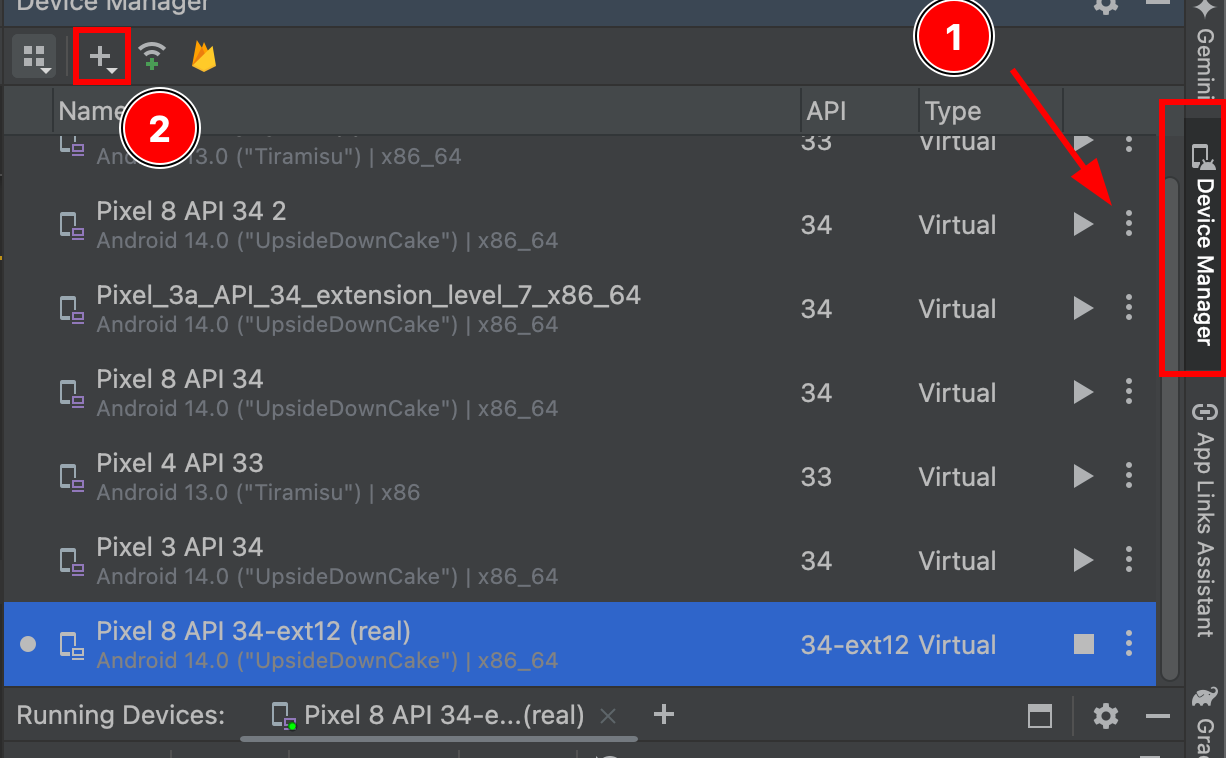
-
Erstellen Sie ein virtuelles Gerät
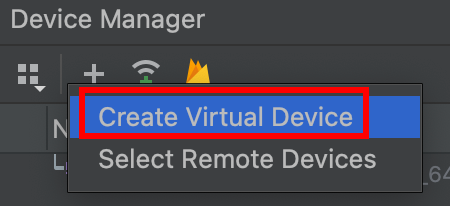
-
Wählen Sie ein beliebiges Gerät mit einem
Play StoreSymbol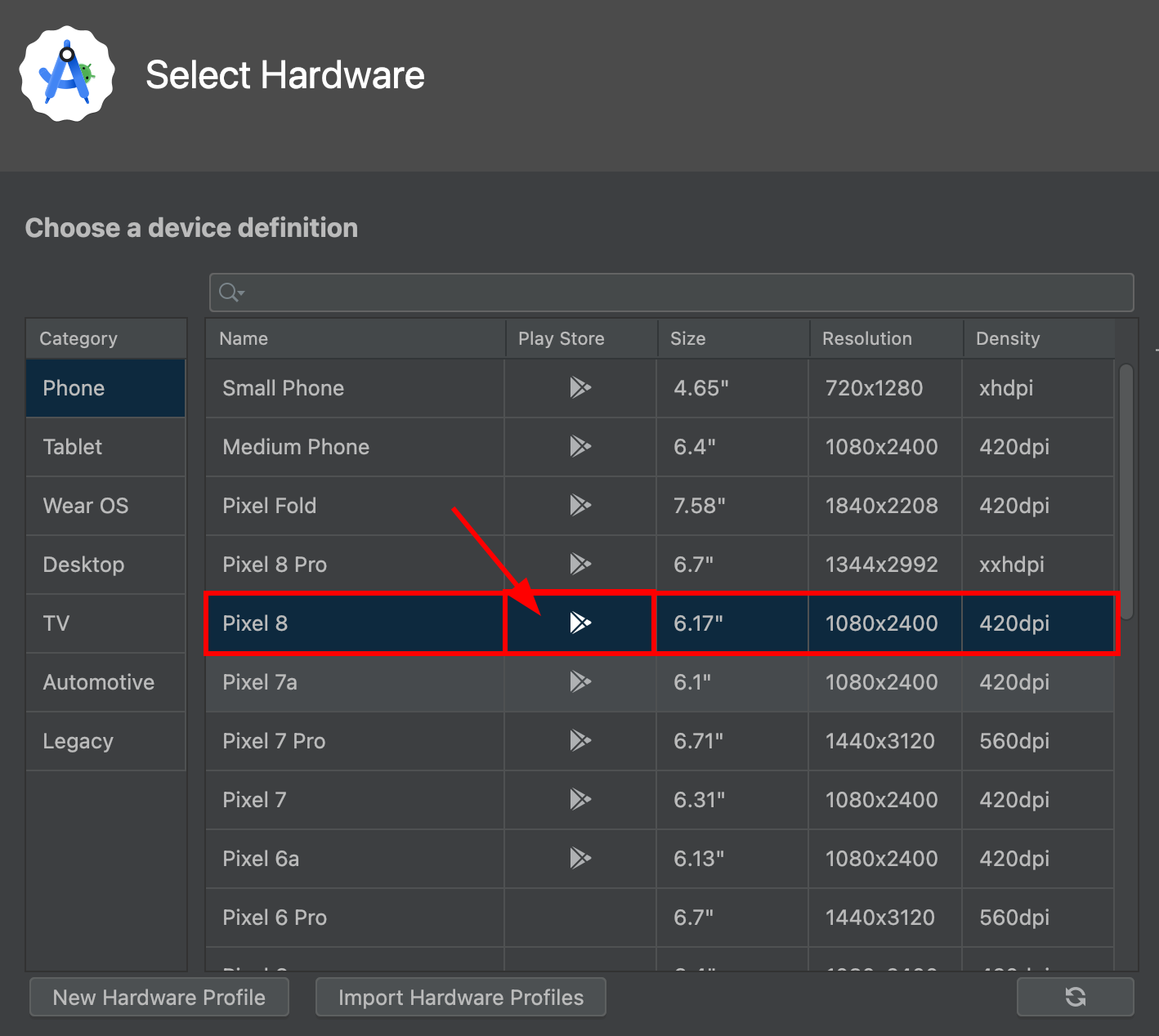
Wie Sie sehen können, unterstützt der
pixel 8diePlay StoreDienste -
Klicken Sie auf
next
-
Stellen Sie sicher, dass das OS-Image vom Typ
Google Playist. Es MUSS vom TypGoogle Playsein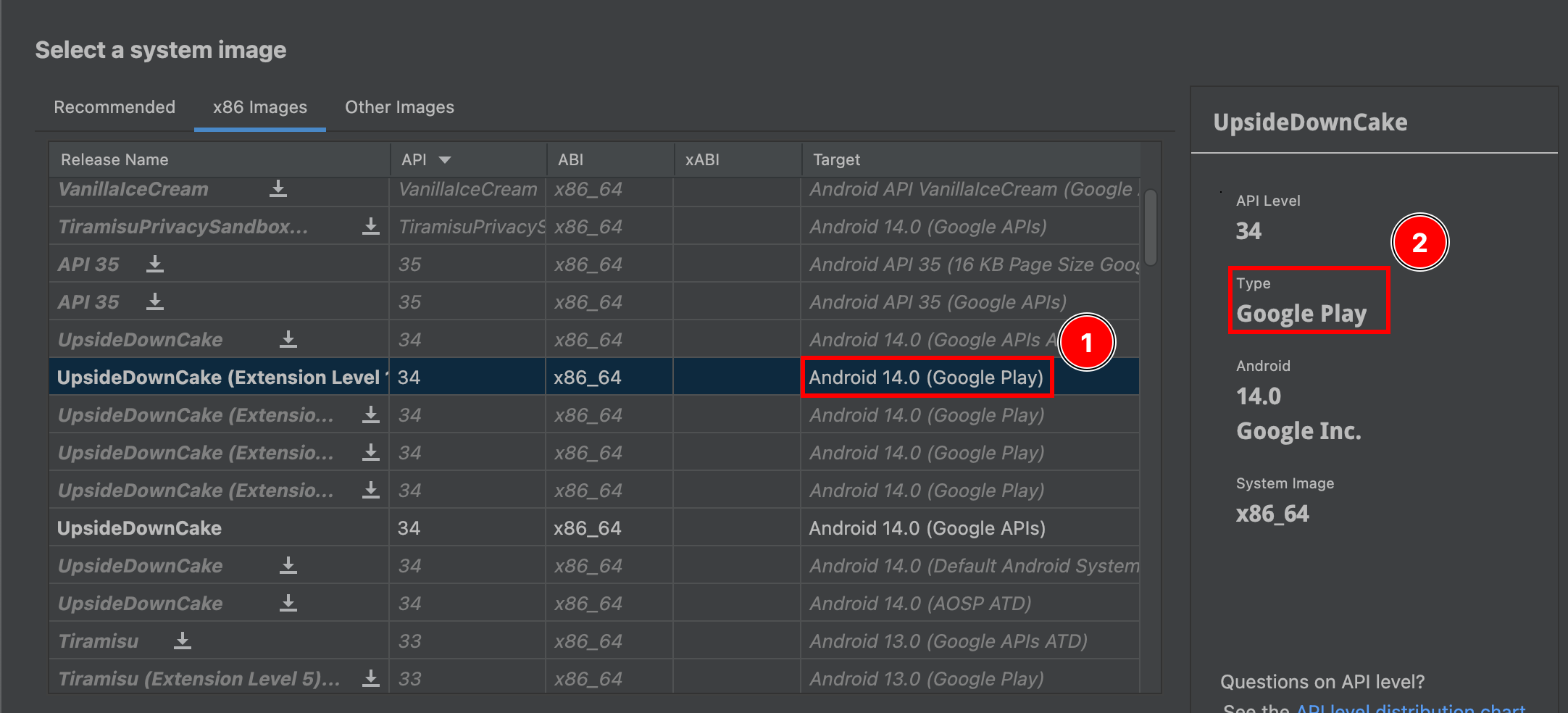
-
Klicken Sie auf next

-
Bestätigen Sie Ihr Gerät. Sie können Ihren Emulator nach Belieben benennen
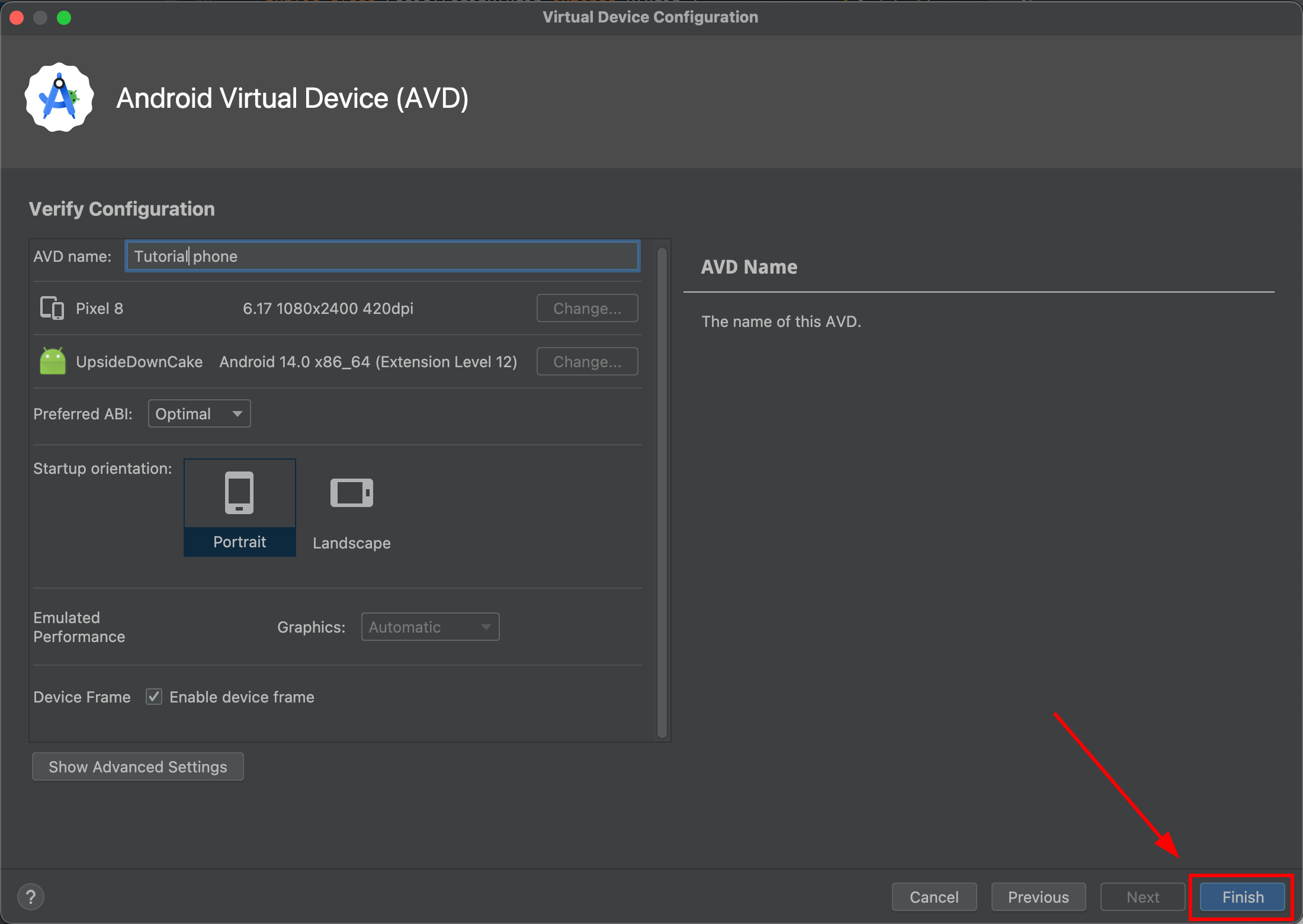
-
Gehen Sie in den
Device Managerund starten Sie Ihren Simulator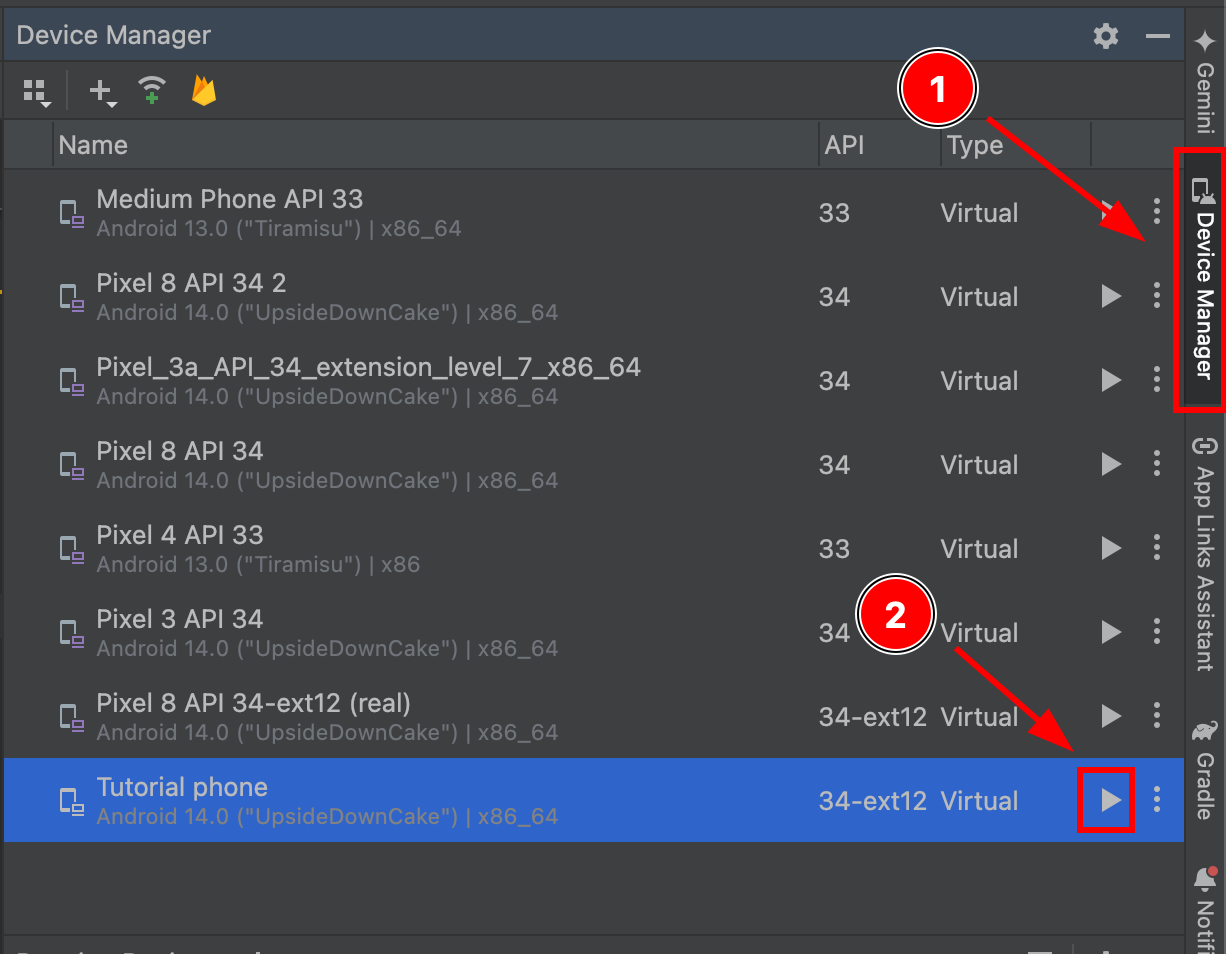
-
Nachdem der Simulator hochgefahren ist, gehen Sie in die Einstellungen

-
Gehen Sie zu
Google Play
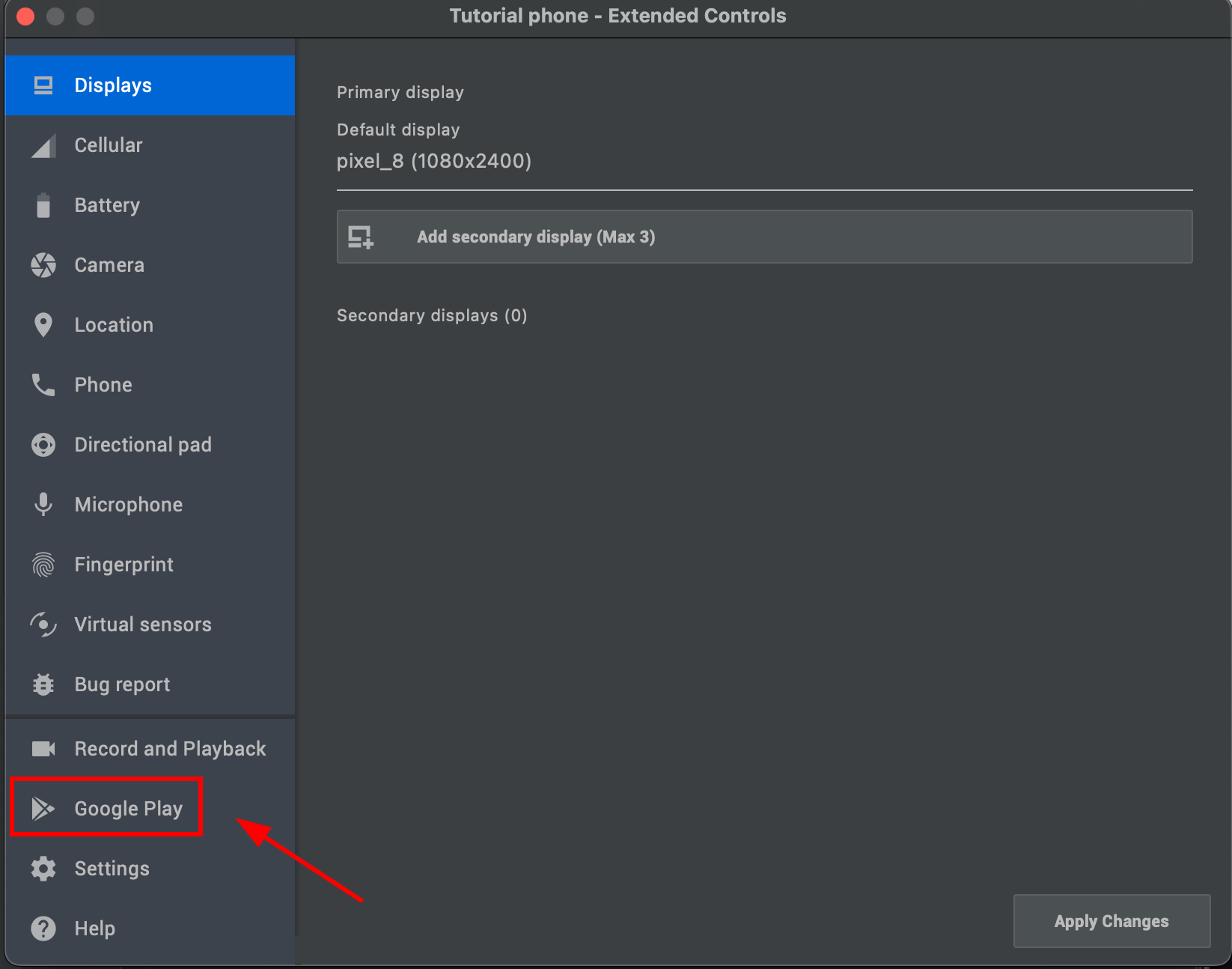
- Klicken Sie auf
Updateund warten Sie etwa 60 Sekunden
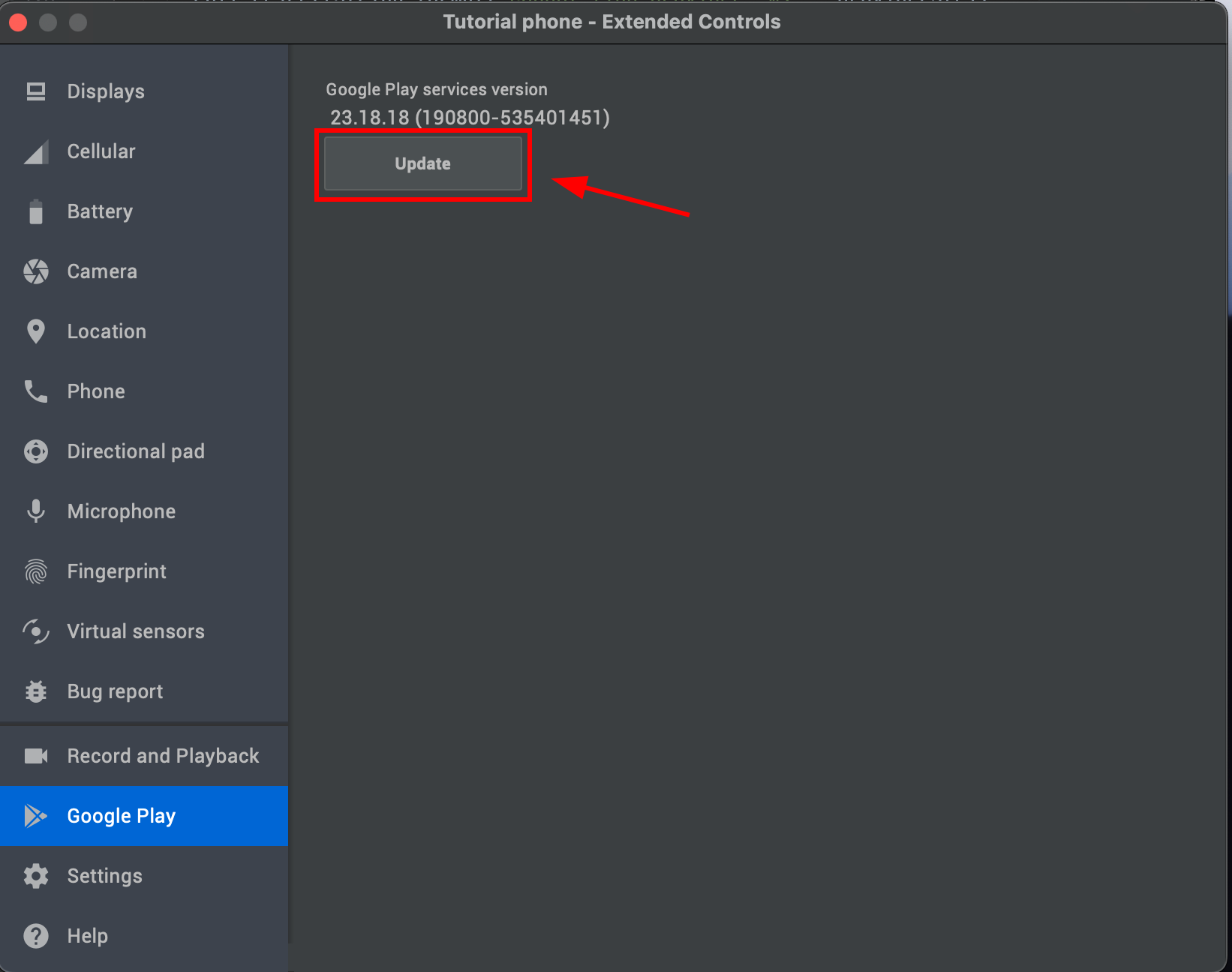
-
-
Testen Sie Ihre Anwendung
Wenn Sie alles richtig gemacht haben, sollten Sie sehen, dass der Google-Login-Ablauf ordnungsgemäß funktioniert:
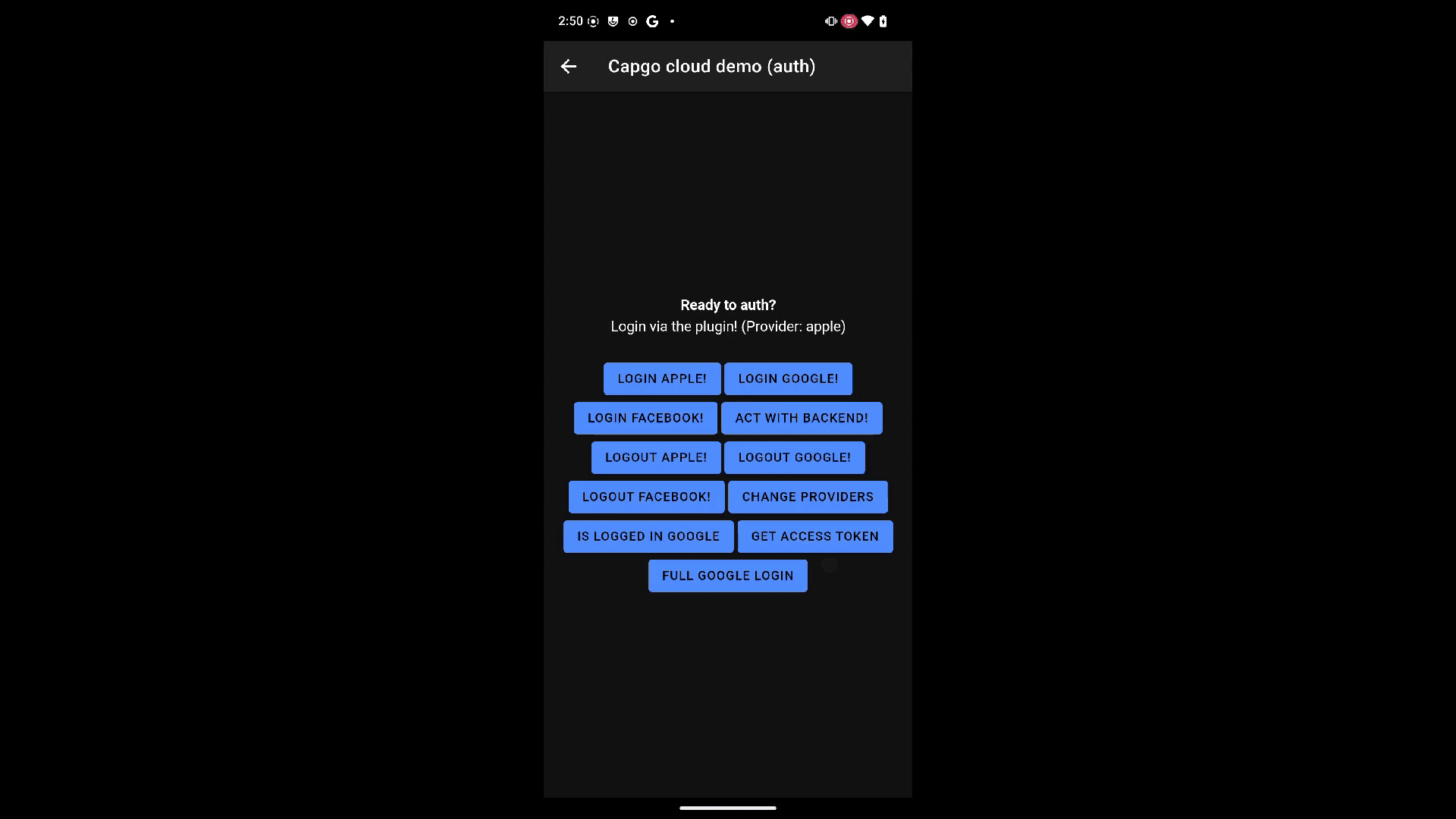
Fehlerbehebung
Section titled “Fehlerbehebung”Wenn Sie Probleme haben, schauen Sie sich bitte die Github Issues an.
Die Probleme mit Google Login sind IMMER mit dem SHA1-Zertifikat verbunden.
Wenn Sie das Entwicklungs-SHA1-Zertifikat nicht erhalten können, versuchen Sie, einen benutzerdefinierten Keystore zu verwenden. Hier ist ein Kommentar, der erklärt, wie Sie einen Keystore zu Ihrem Projekt hinzufügen.
